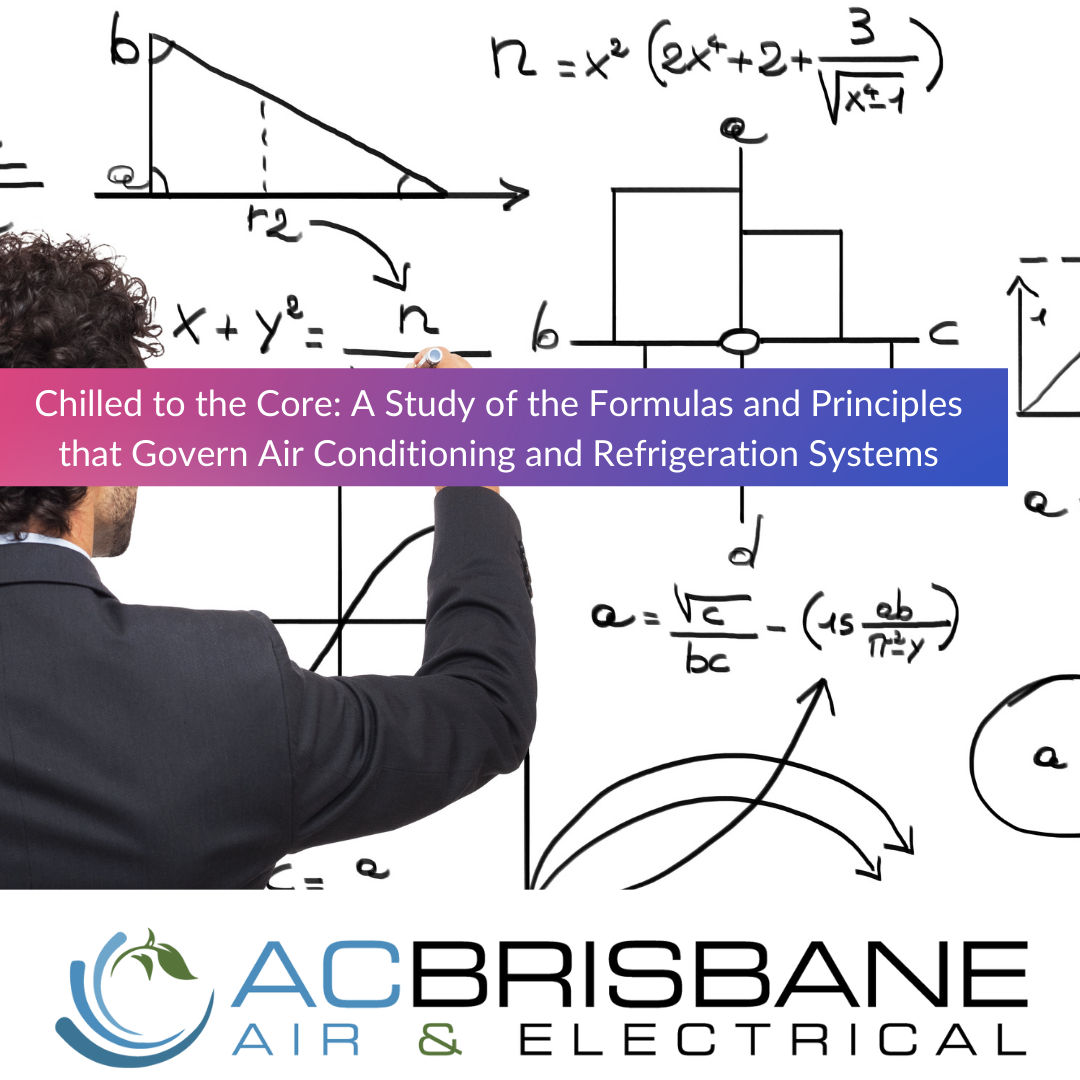The Ideal Gas Law: PV = nRT
Example: If a system contains 2 moles of gas at a pressure of 10 atmospheres and a temperature of 200K, what is the volume of the gas?
Solution: PV = (2)(10)(200) = 4000 L
The Coefficient of Performance (COP) for a refrigeration or heat pump system: COP = (Cooling or heating output) / (Work input)
Example: A refrigeration system has a cooling output of 10,000 BTU/hr and a work input of 2,500 BTU/hr.
What is the COP of the system?
Solution: COP = 10,000 / 2,500 = 4
The rate of heat transfer: Q = U x A x ΔT
Example: A heat exchanger has a heat transfer coefficient of 10 W/m^2*K, an area of 5 square meters and a temperature difference of 20 K. What is the rate of heat transfer?
Solution: Q = 10 x 5 x 20 = 1000 W
The psychrometric formula: w = (2501 + 1.86 Tdb + 2.16Twb) / (28.96 + 1.86 Tdb + 2.16Twb)
Example: At a dry-bulb temperature of 25°C and a wet-bulb temperature of 20°C, what is the specific humidity of air?
Solution: w = (2501 + 1.8625 + 2.1620) / (28.96 + 1.8625 + 2.1620) = 0.0126 kg/kg
The evaporator or condenser heat exchanger equation: Q = U x A x LMTD
Example: An evaporator has a heat transfer coefficient of 10 W/m^2*K, an area of 5 square meters and a log mean temperature difference of 20 K. What is the rate of heat transfer?
Solution: Q = 10 x 5 x 20 = 1000 W
The refrigeration capacity formula: TR = (h1 - h4) x m
Example: A refrigeration system has a refrigerant mass flow rate of 1 kg/s and the enthalpy difference between the inlet and outlet refrigerant is 50 kJ/kg. What is the refrigeration capacity of the system?
Solution: TR = (50) x (1) = 50 kJ/s
The compressor power formula: Wc = (h3 - h2) x m
Example: A compressor has a refrigerant mass flow rate of 1 kg/s and the enthalpy difference between the inlet and outlet refrigerant is 50 kJ/kg. What is the compressor power?
Solution: Wc = (50) x (1) = 50 kJ/s
The refrigerant mass flow rate formula: m = q / (h1 - h2)
Example: A refrigeration system has a cooling capacity of 1 kW and the enthalpy difference between the inlet and outlet refrigerant is 20 kJ/kg. What is the refrigerant mass flow rate?
Solution: m = 1000 / 20 = 50 kg/s
The superheat formula: Super heat = (Suction line temperature - saturated suction temperature)
Example: The suction line temperature of a refrigeration system is 35°C and the saturated suction temperature is -5°C. What is the superheat?
Solution: Superheat = 35 - (-5) = 40°C
The subcooling formula: Subcooling = (Liquid line temperature - saturated liquid temperature)
Example: The liquid line temperature of a refrigeration system is 25°C and the saturated liquid temperature is 15°C. What is the subcooling?
Solution: Subcooling = 25 - 15 = 10°C
Please note that these are just examples and specific calculations will vary depending on the specific conditions and system being used. Additionally, these are not an exhaustive list and there are many other formulas and calculations used in the industry.

